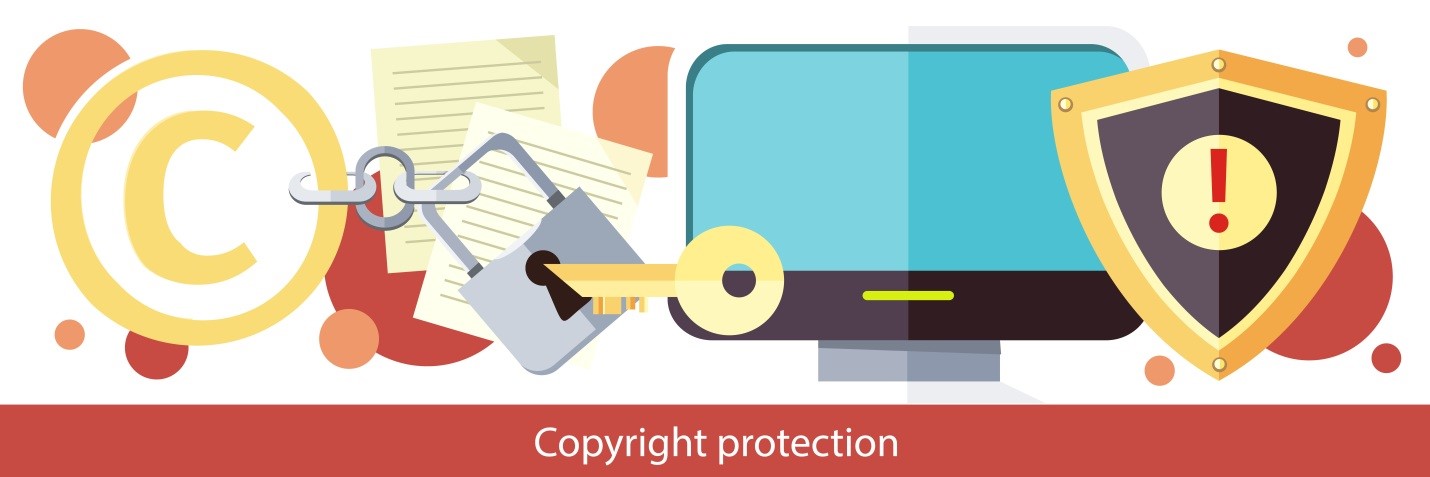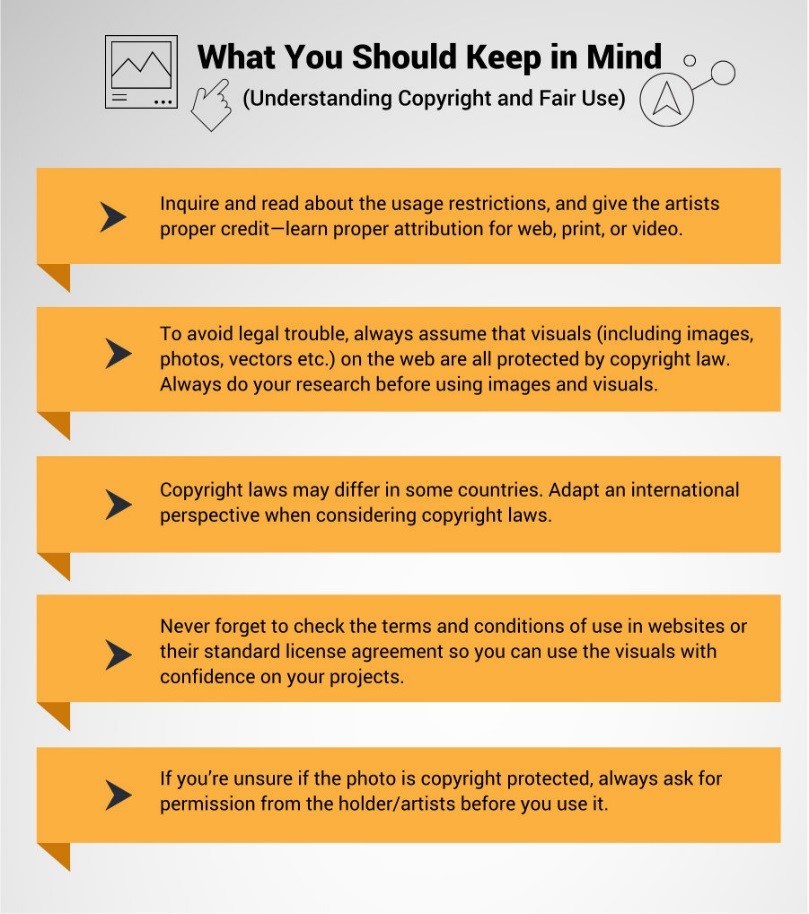
Things You Want to Know About Copyright Infringement and Fair Use

Images are considered as vital assets for digital marketing. On social media, you can observe how visually appealing content can go viral and get rave views. Even marketers agreed that visual content is the most valuable and effective type of marketing content. However, these images don’t come in empty. If you’re not wary of using images, it may cost you thousands of dollars in legal fees.
As visual marketing gets more popular, educating yourself about copyright, copyright infringement, and learning which images are safe to use in your blog is a must.
Lesley Ellen Harris—digital copyright expert and a published author—answers some of the important questions about the legal use of images, permissions, and infringement. So before you curate visuals for your blogs, take note of these considerations.
Can you legally use images and visuals for your post?
“This global access to works shared digitally magnifies your copyright risks, including the risk that you will be accused of copyright infringement. Note that acceptable use under US law, including fair use, may contravene the copyright laws of countries where the work is accessed. Therefore, you should always assess the digital use of copyright protected works from an international copyright law perspective.”
How do you know if the image you want to use is copyright protected?
“In the US and the other 174 countries that currently belong to the largest international copyright treaty—the Berne Convention—a work is copyright protected as soon as it’s put into a fixed form. There’s no requirement to put a copyright symbol (©) on it or to register it with a government copyright office. You should treat all images as copyright protected, unless your research indicates otherwise.”
Content creators should double check the images before downloading it—even if these images are from free websites. Harris advices us to read the terms and conditions first to make sure the image can be legally used.
Fair Use and Public Domain
“The US Copyright Act sets out types of uses a fair use may apply to, and then, lists four factors to consider in determining whether a use may be fair use. Fair use may be raised if the use is for a purpose such as criticism, comment, news reporting, teaching, scholarship, or research.”
“Fair use is a deliberately ambiguous principle in the US copyright law, and there is a risk that your use of it may be challenged as copyright infringement. Ultimately, fair use can only be definitively determined in a court of law.”
On the other hand, websites like Pixabay.com, Unsplash.com, or Pexels.com offer royalty free photos that you can freely use and modify for both commercial and noncommercial purposes. These are type of images that are part of public domain when the owner give the rights to the site, or in some cases, didn’t meet the regulations and requirements for renewing the copyright of their work.
 Permissions and Licenses
Permissions and Licenses
What happens when the image you want to use is protected by copyright?
The best thing that you have to do is to ask for permission from its respectful owner or artist. “Only the copyright owner, or their authorized representative, can provide permission or a license to use their work.”
If you’re having trouble with finding high-quality photos, you can visit stock photo companies that provide professional images for certain fees. However, these images still have limitations included, namely, the provisions for modifications, purpose of use, the duration, and the territory of use.
What’s your final advice for content creators?
“Educate yourself about copyright law generally, both in your own country and internationally, and about copyright images in particular. Copyrightlaws.com offers a course and many articles on legally using images. Most importantly, always assume that any image you find anywhere is protected by copyright, then do your research and seek permission to use them.”

Lesley Ellen Harris, JD, CEO of Copyrightlaws.com, is an expert in US, Canadian, and International copyright laws. She has written 10 books on the subject. She manages her own website where she translates copyright legalese into plain English and provides articles, certificate programs, e-Tutorials, and trainings for anyone who wants to learn about copyright laws. A consultant and speaker, Harris partnered up with the American Library Association to provide online seminars and workshops on copyright laws. She also worked with the Special Libraries Association to teach her nine-course Certificate in Copyright Management program that she developed.
Leave a Reply


